LG on Sunday took the stage in Barcelona, Spain to unveil the phones that will drive its immediate future. Unlike previous years, we got to see two new devices at the same time, the V50 ThinQ and the G8 ThinQ. Both phones were leaked before the show, and it turns out all of their signature features were either announced before MWC 2019 or featured in rumors. We’re looking at 5G and dual-screen support for the V50, and 3D face and gesture recognition as well as “sound on display” technology in the G8. All of that sounds great on paper, but in real life things aren’t always pretty, or even necessary.
On paper, these two phones are nearly identical, which begs the obvious question: why aren’t we looking at a single phone series, much like what Samsung does with the Galaxy S flagship? All the Galaxy S10 phones share many of the same core features, from overall design to hardware specs and software experience. When it comes to LG’s new ThinQ phones, you’ll soon see that you’ll either have to choose between a future where you can connect to 5G and use a second screen, or opt for a future where you get a powerful Z camera with gestures support.
Whatever package you end up choosing, you will get a QHD+ OLED FullVision display with a notch at the top (either 6.4 or 6.1 inches in size), the Snapdragon 855 processor, 6GB of RAM, 128GB of storage, microSD support, up to triple-lens setups, dual selfie shooters, USB-C connectivity, rear-facing fingerprint sensor, decent battery with fast-charging support, and Android 9.0.
V50 ThinQ hands-on
This is the biggest new LG phone you’ll be able to buy this year, and the only one that comes with 5G. LG made a big deal about its partnership with Sprint on stage during the event, but the V50 will also launch on Verizon in the US, while multiple international carriers will stock the phone later this year.

5G is going to be the main selling point for the handset, and that’s not necessarily great news considering that 5G networks are still mostly unavailable.
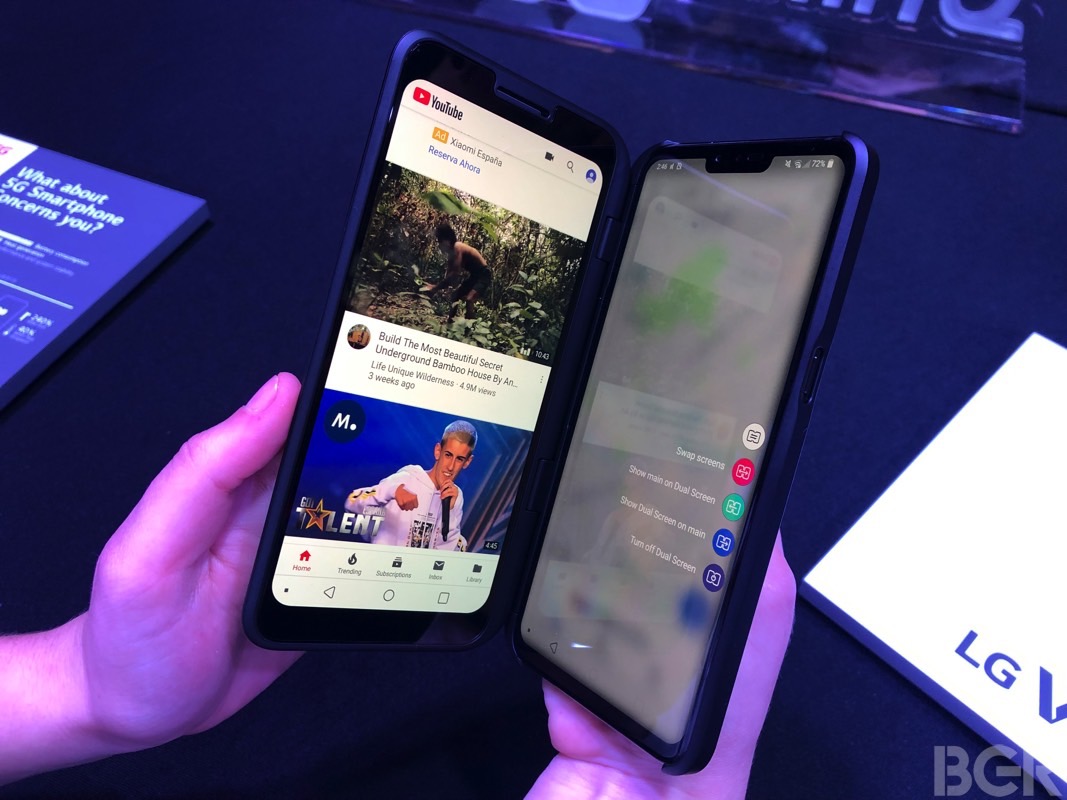
The other neat trick the phone offers is a Dual Screen mode for a “richer 5G experience.” What LG did was to develop a case for the phone that houses a secondary display. No, LG didn’t make a foldable phone and don’t even call the V50 ThinQ a foldable device. It’s a lot uglier than that when all said and done.
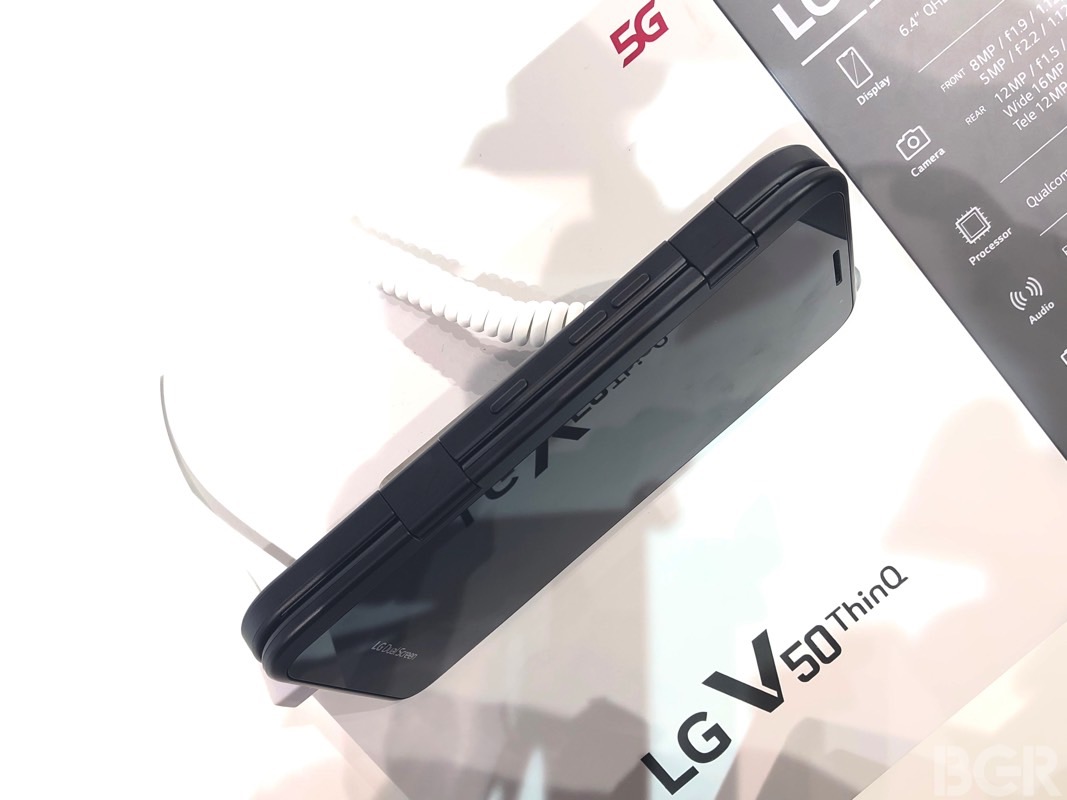
The case itself is pretty bulky, and you’ll have a hard time managing the full package. I wouldn’t even try to squeeze one in jeans pockets. It’s just not going to be pretty. The Dual Screen also feels plasticky and cheap, and sort of ruins the V50’s otherwise great design lines. The phone has a smooth back with no camera bump whatsoever, in spite of rocking three cameras. It’s also pretty thin at 8.3mm, just slightly thicker than its direct rival, the Galaxy S10+. But that case is possibly one of the worst ideas coming out of MWC this year.
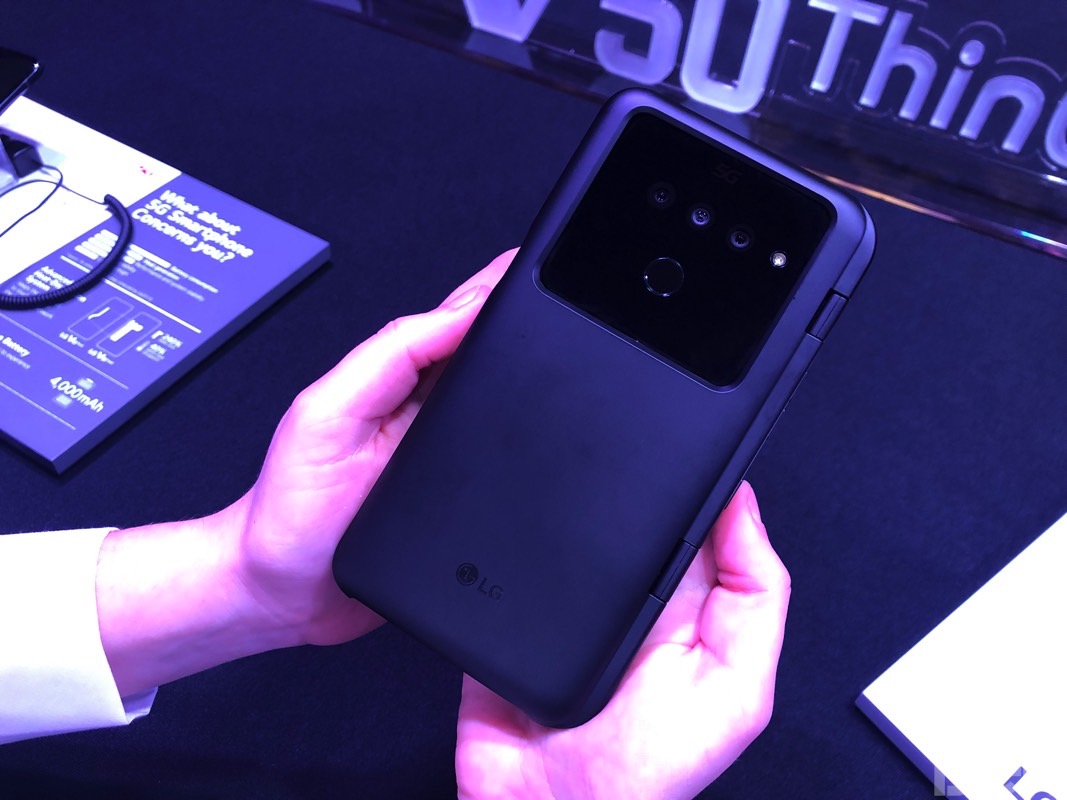
To make matters slightly worse, the display inside the case, a 6.2-inch screen that Full HD OLED screen, will draw power directly from the main phone, as it doesn’t feature a battery of its own. In total, the package weighs 314 grams.
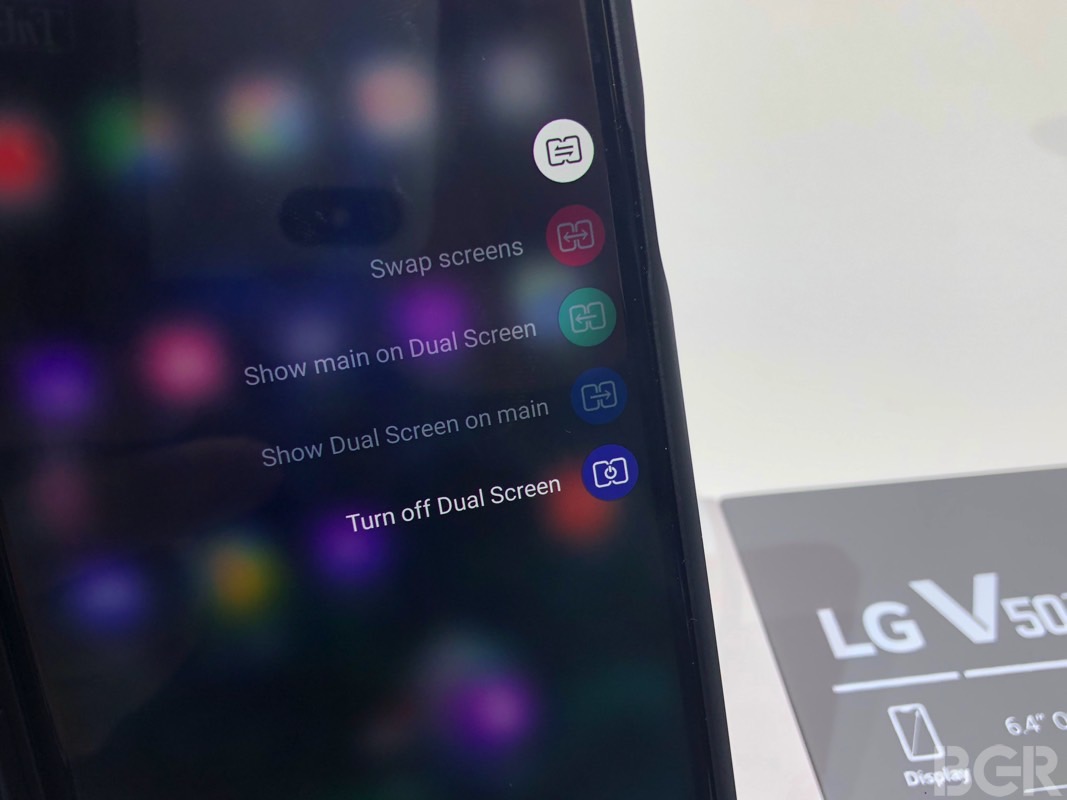
A menu on the main screen on the phone will let you manage the second screen, which connects with the phone via Pogo pins. You’ll then be able to launch two apps side by side, swap them between the screens, and even use the secondary screen as a controller for games. I wasn’t able to test it on games while at LG’s booth, because the phones had no games installed that would support it. The phone also crashed while I was setting up apps for each screen which is understandable given that this was a pre-release device. But, as the unit I was using was rebooting, a V50 ThinQ in Dual Screen mode next to me crashed as well.
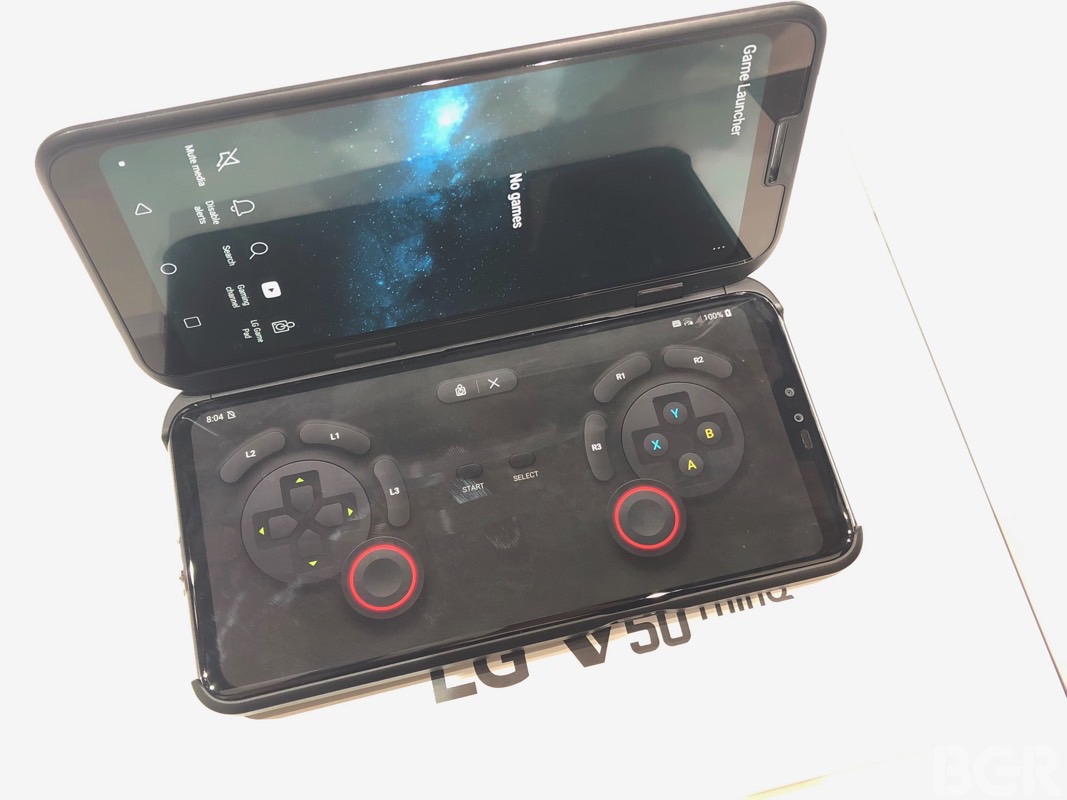
Finally, if you’re thinking that you can use the entire thing as a tablet, by projecting a single screen on both displays, you should know that’s not going to work. The screens aren’t even symmetric for that matter.
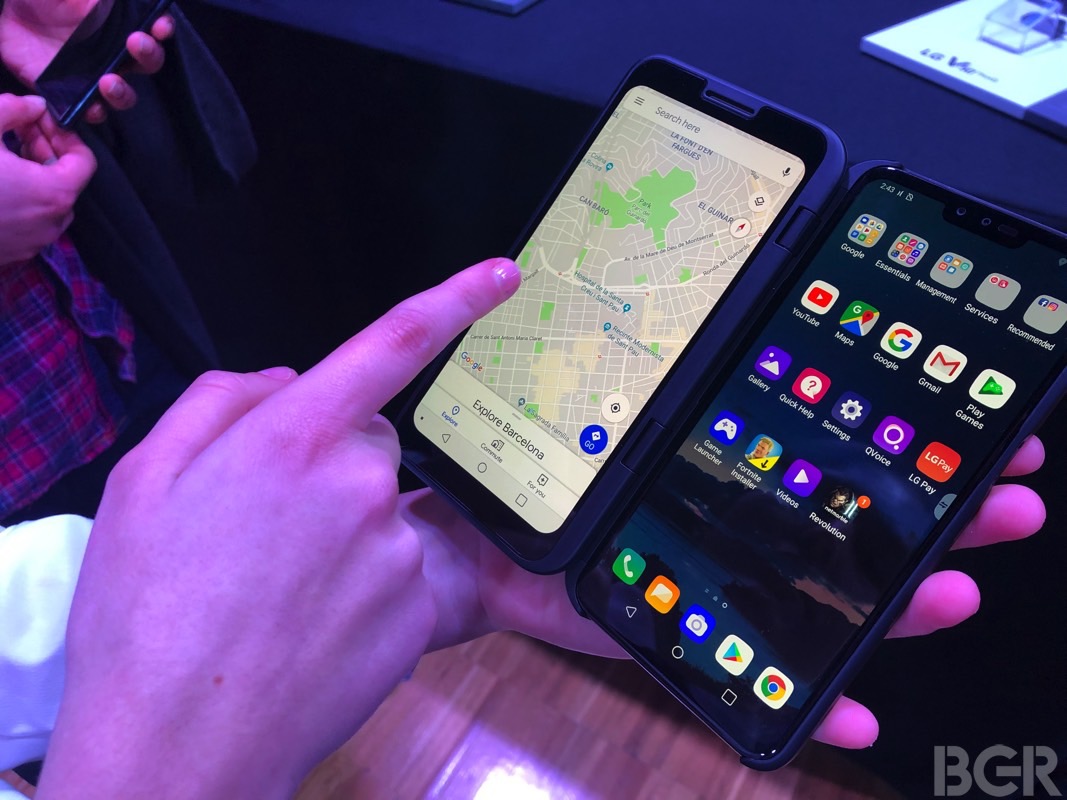
There’s no telling what the Dual Screen accessory will cost, and it’ll vary by market. But you’d probably be better off staying away from this unusual contraption, which seems to be a strange compromise between foldable phones and smartphones that let you extend your Android experience to a real external display.
To recap, the V50 is practically a V40 version sporting 5G connectivity that you can’t use and a gimmicky Dual Screen accessory that you shouldn’t get.
G8 ThinQ
The G8 ThinQ, meanwhile, is a different story. This phone packs a couple of technologies that you won’t find on any other phones at the show, making it the clear LG 2019 flagship in my book.
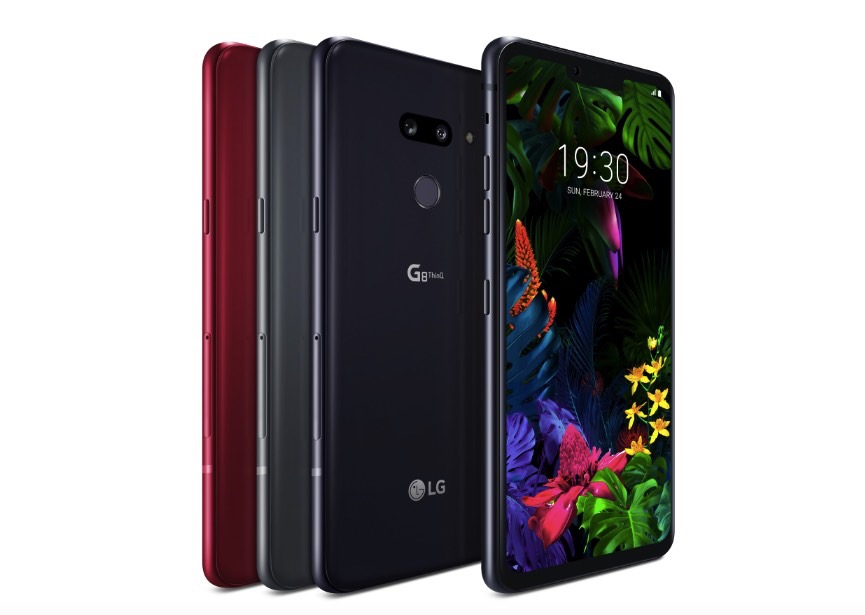
First of all, we have the new Crystal Sound OLED (CSO) display that’s actually a speaker. This particular invention allows smartphone makers to remove the front-facing speaker from phones and create the all-screen handset of our dreams. The LG booth was already pretty loud when I tested the feature, but even so, the CSO tech worked great, both when testing the built-in audio that LG wants you to listen to but also YouTube content. And you could sense the vibration of the sound too, both on the back and on the front of the phone, the louder the phone got. In addition to CSO, the phone also features support for DTS:X 3D Surround sound and 32-bit Hi-Fi Quad DAC, so it’s safe to say the G8 will be great tool for consuming content.
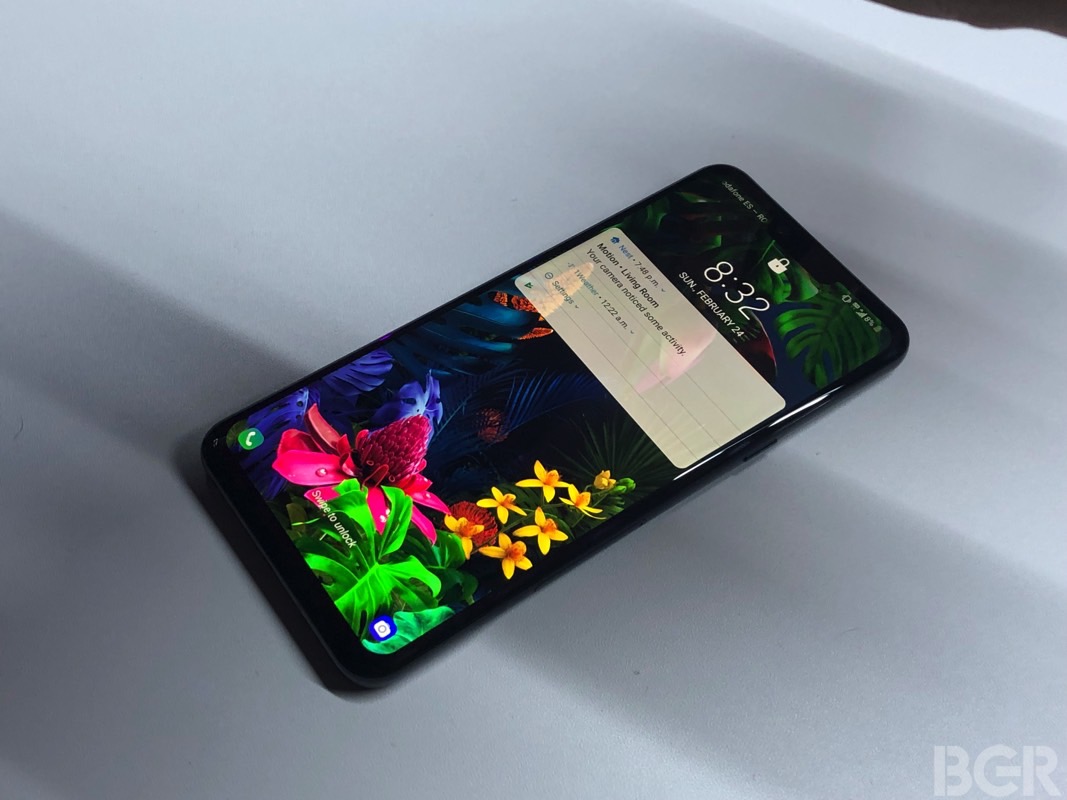
As you can see in these images, the V8 does look a lot like the V50 when it comes to design. We’re looking at an all-screen display with a notch at the top and chin at the bottom, and a smooth rear panel with no camera bump. Sadly, the fingerprint sensor is still located on the back of the phone, which isn’t as cool as having the sensor placed inside the screen.
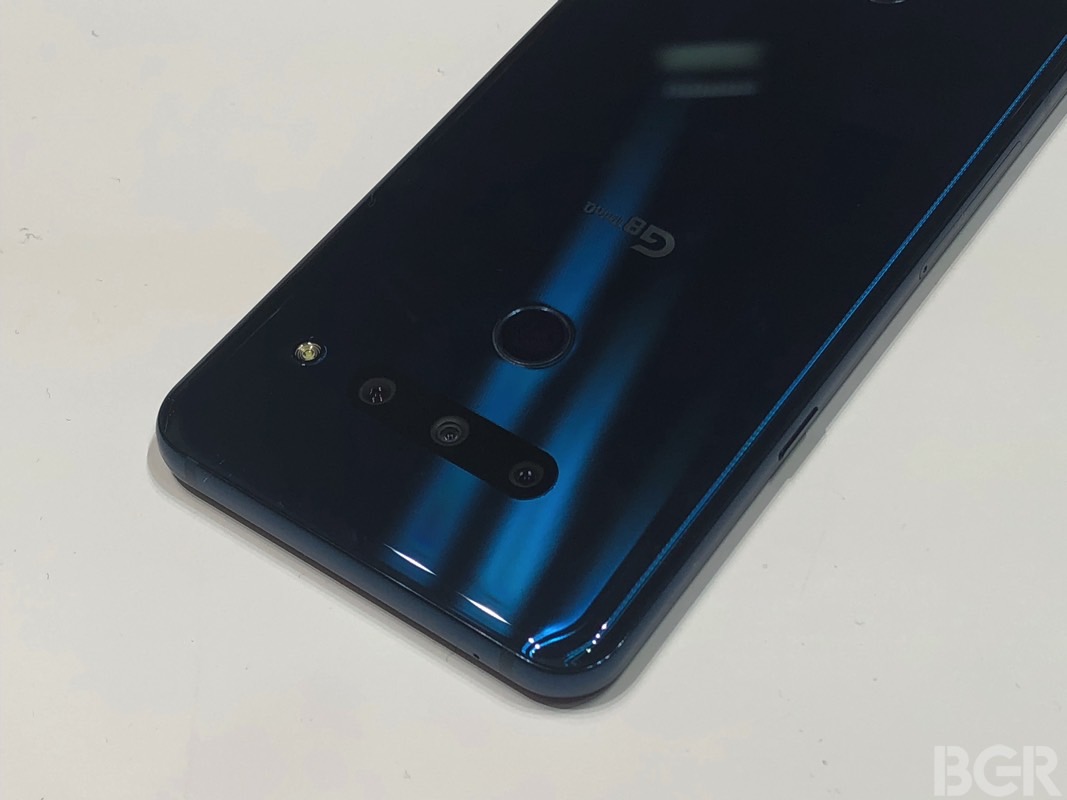
But, to get back to the top bezel, the G8’s notch has a unique trick, a secondary Z Camera, which, as the name suggests, measures depth. Not only is it good enough to provide 3D facial recognition like the iPhone’s Face ID, which LG calls Face Unlock, but it also supports hand gestures and Hand ID.
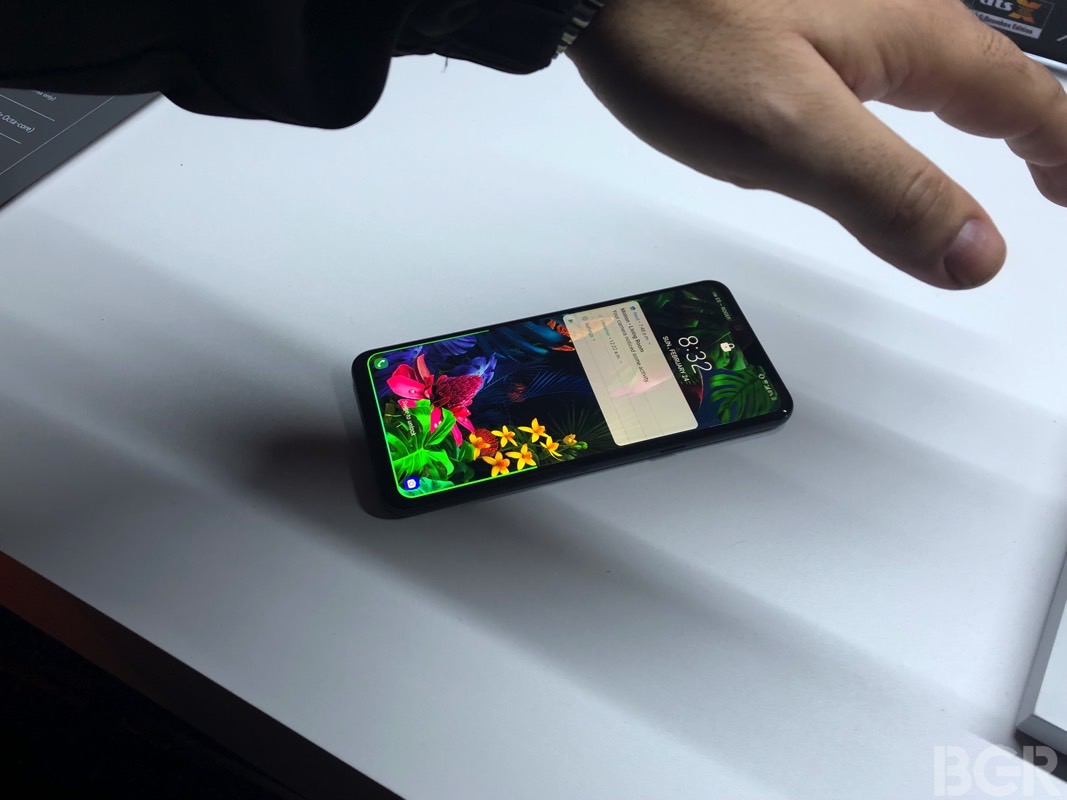
Hand ID leverages the power of the time-of-flight (ToF) and infrared sensor to read the geography of the palm but also determine the exact design of the palm’s veins structure. The Z Camera can quickly identify the shape and thickness of the veins, and offer instant authentication. LG said on stage that “Vein ID” is even more secure than other biometrics because that’s something you absolutely can’t fake.
In real-life usage, Hand ID worked as expected. I wasn’t able to test the feature myself, a process that involves registering a hand before using it to authenticate, but I saw it in live demos that followed LG’s presser. In the image above, for example, a visual cue on the bottom and sides of the phone tell you that hand scanning is in progress on the phone.

ToF sensors also make possible the new Air Motion gestures that will let you control the phone without touching it. This sounds a lot like Minority Report technology, but for phones. That means it’s not as sophisticated — and maybe not even needed. Even so, LG thinks that we’re touching our phones way too much so Air Motion should help us avoid any of that, especially during particular times of day, during specific activities like driving or in winter when you’re wearing gloves.
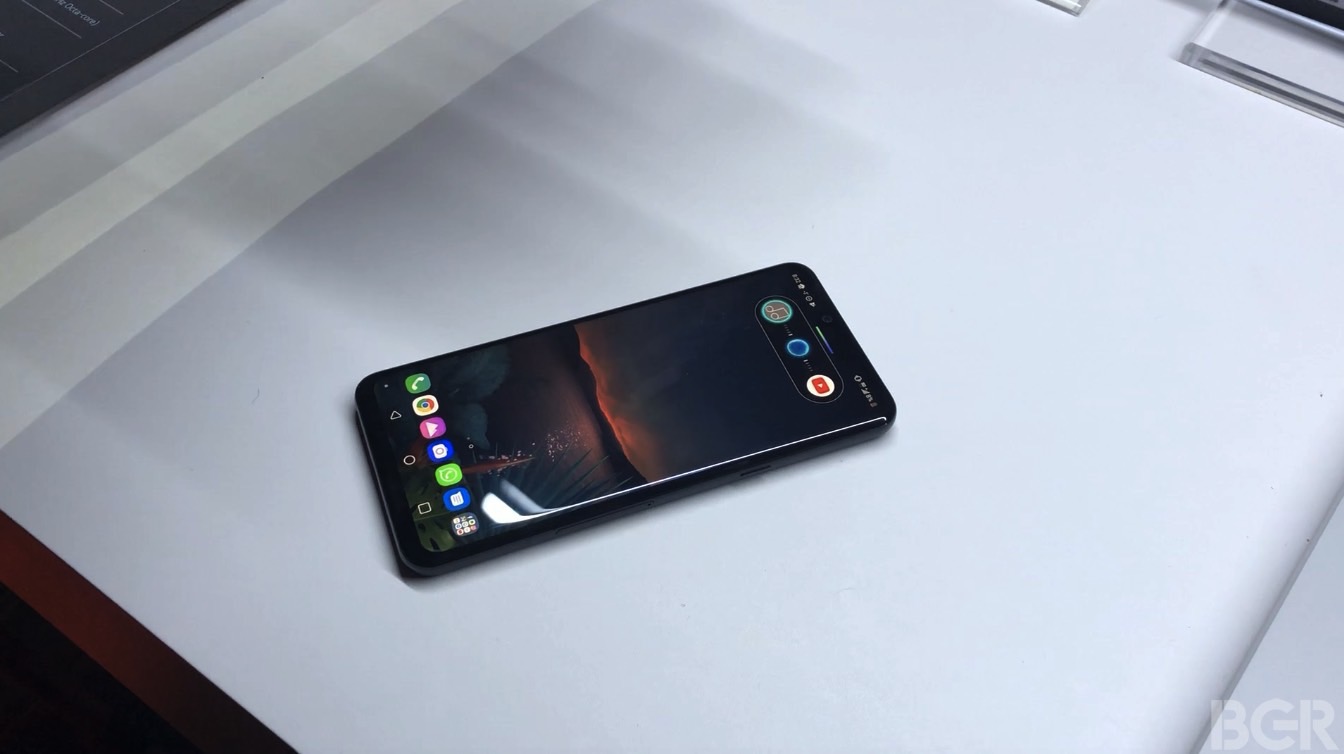
Air Motion lets you hover your hand over the phone to perform various tasks, including answering and declining calls, switching between applications, capturing screenshots, and, the coolest of them all, adjusting volume. User interface elements that you’ll “interact” with while performing gestures appear on the screen right under the notch, in the form of buttons or volume rockers. Just like with any other new time of user interface, it’ll take some getting used to performing these gestures on the phone, but LG does have something here. Time will tell whether users will actually use Air Motion or not.
Early conclusions
I’ve only focused on the signature features of LG’s new flagships in this preview, but there’s more to be discovered the two phones than previews will allow. The phones do rock the latest Qualcomm high-end processor, and both of them feature improved camera experiences that include dual and triple camera modes, as well as Z Camera-related features — ToF tech is also employed for selfies action. But the G8 seems to me like the better model, and it’s a shame that LG didn’t combine three of the four new technologies it unveiled at MWC to make a single, great device. That Dual Screen accessory isn’t appealing at all, but maybe 5G, CSO, and the Z Camera will one day be available on the same LG flagship.








